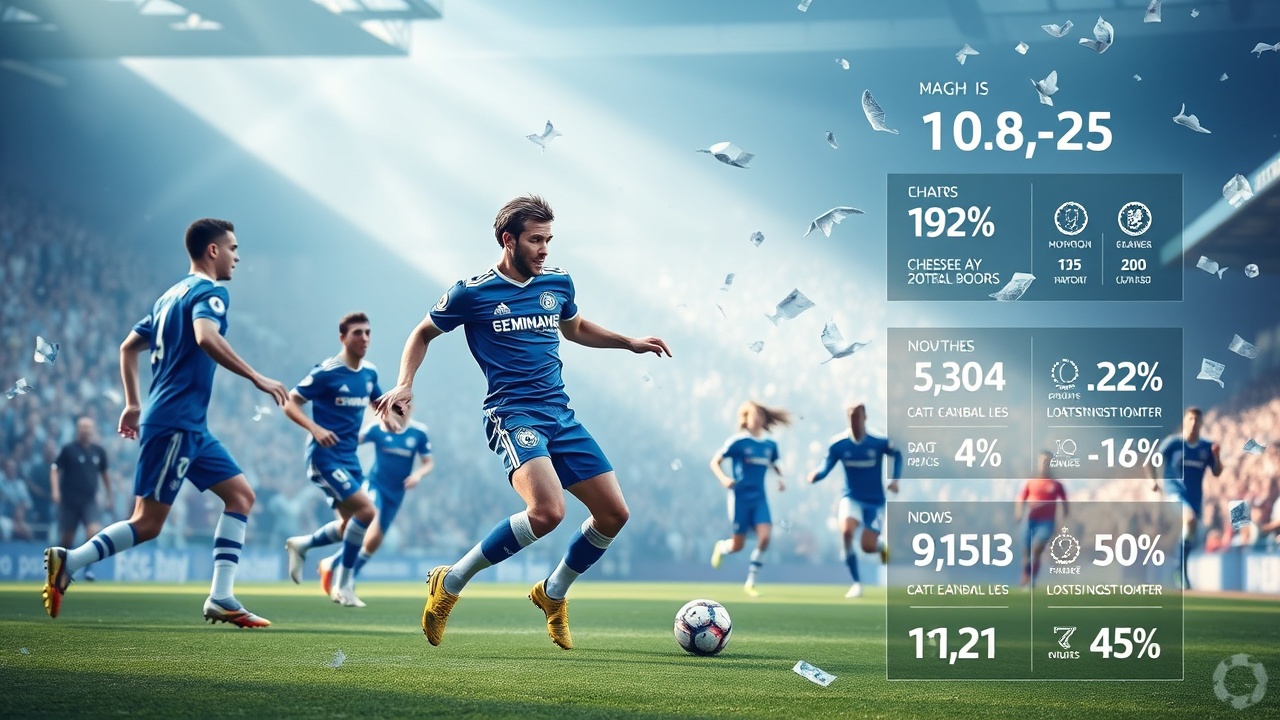Assessing Chelsea’s Season
Assessing Chelsea’s success this season poses a unique challenge, unlike the more straightforward evaluations of other Premier League teams. For instance, Wolverhampton Wanderers, who recently suffered a heavy 3-0 defeat to Chelsea, are facing dire consequences with their winless record leading to managerial changes and potential relegation. Conversely, Sunderland, coming off a draw against Arsenal and expected to struggle, currently surprises everyone by sitting in fourth place, suggesting a successful campaign.
Benchmarks for Evaluation
The benchmarks for most teams center around whether they are improving compared to the previous year, the sustainability of their performance, and their financial investment versus outcomes. However, Chelsea’s situation complicates this evaluation. Currently placed third in the league, trailing only Arsenal and Manchester City, their standing is marred by various factors including player performance, injuries, competition difficulty, and crucial aspects like officiating decisions.
Key Statistics and Performance
Understanding Chelsea’s current performance requires examining several key statistics. Coach Enzo Maresca‘s squad shows an improved adjusted goal differential, moving from +0.56 last season to +0.72 this season, indicating progress. Notably, while the general pace of play in the league has evolved — with teams recording fewer possessions and altering passing styles — Chelsea’s playing style remains largely unchanged; they rank seventh in possession this season and slightly reduced their average pass length.
Chelsea is also employing a more effective pressing strategy, leading to fewer but more quality shots taken, which are critical in the ongoing campaign. Despite Enzo Maresca’s coaching abilities, his approach has been frequently scrutinized, especially as he has rotated through an astonishing 85 lineup changes across all competitions, the highest in the Premier League. This flexibility has showcased the strength of their deep squad, with 25 players racking up significant minutes this season.
Youth and Development
Interestingly, what distinguishes Chelsea this year is their youth. The average age of the squad has increased mildly from last year’s 23.7 to 24.5, suggesting that the players are now more likely to be entering their prime years, a critical phase for player development. This holistic growth, however, does prompt questions as to why the uptick in their goals differential isn’t more pronounced.
Challenges and Injuries
Maresca expressed satisfaction with the team after their victory over Wolves, highlighting a desire for continuous improvement despite a precarious first half of the match. Previous star player Cole Palmer, who significantly contributed to Chelsea’s success last year, has been sidelined this season due to injury, raising concerns about the team’s resilience in his absence. The squad has also faced disciplinary challenges, leading the league in red cards, which has impacted performance, particularly when playing short-handed.
UEFA Champions League Performance
In UEFA Champions League action, Chelsea has had mixed results, illustrated by a shaky expected goals (xG) differential and performances that rank them as merely average compared to other teams in the tournament. While they faced tough opponents, including a match against Bayern Munich, they have yet to achieve the dominance that suggests a squad capable of challenging for major titles.
Future Prospects
Amid these ups and downs, the overarching question remains whether Chelsea aims for trophies or is focused on building a potential future roster of stars. This season’s additions and strategic decisions have raised eyebrows, especially with players who haven’t yet performed to expectations. As the campaign progresses, Chelsea’s potential for success appears to hinge on returning to full strength and minimizing red cards, while also navigating a challenging fixture list.
Conclusion
Despite the tumultuous start, Chelsea’s current performance indicates a stable trajectory, but as they edge closer to critical matches ahead, the pressure will mount to convert potential into tangible success. Maintaining their current points-per-game rate could lead them to a similar finish as last season, but whether that constitutes progress remains debatable.




